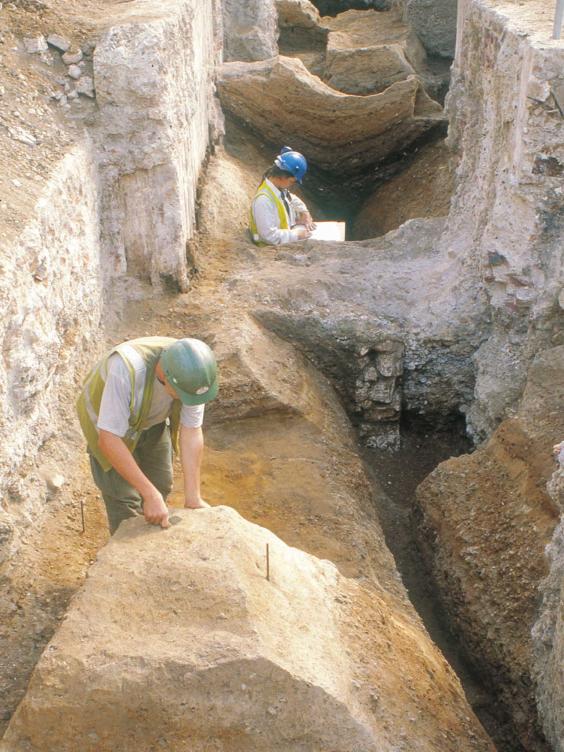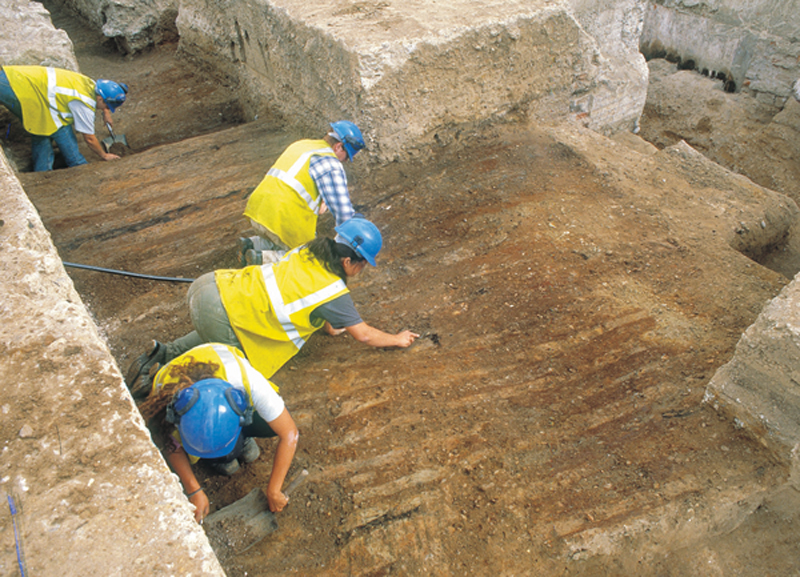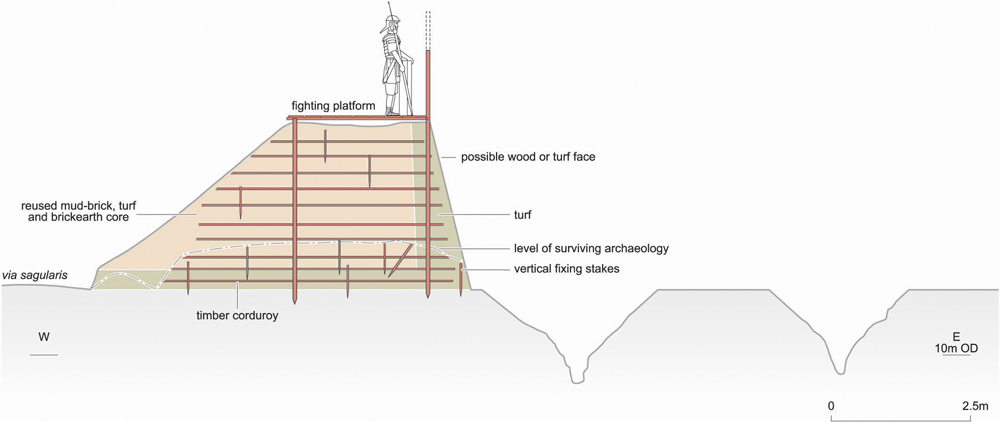New archaeological research, carried out by Museum of London Archaeology (Mola), of a previously unknown early Roman fort built in AD63 as a direct response to the sacking of London by the native tribal Queen of the Iceni, Boudicca. The revolt razed the early Roman town to the ground in AD60/61 but until now little was understood about the Roman’s response to this devastating uprising.

The excavations at Plantation Place for British Land on Fenchurch Street in the City of London exposed a section of a rectangular fort that covered 3.7acres. The timber and earthwork fort had 3metre high banks reinforced with interlacing timbers and faced with turves and a timber wall. Running atop the bank was a ‘fighting platform’ fronted by a colossal palisade, with towers positioned at the corners of the gateways. This formidable structure was enclosed by double ditches, 1.9 and 3m deep, forming an impressive obstacle for would be attackers.

The Roman army were experts in construction; proficiently sourcing local materials from nearby woods and even using debris from buildings burnt in the revolt. It is estimated that a fort of this size would have housed a cohort of approximately 500 men but could have been built by hand in a matter of weeks, perhaps with the help of captive Britons. Archaeologists uncovered a pick axe and a hammer, tools that would have been available to the army for building projects.

Within the fort, evidence for roads was uncovered alongside storage and administrative facilities, a granary, cookhouse and even a latrine. The fort was kept clean but a few fragments of armour, including part of a helmet and mounts from horse harnesses were discovered.

Only in active use for fewer than 10 years and with evidence pointing towards the use of tents rather than permanent structures for barracks, the fort was evidently erected as an emergency measure to secure the important trading post of London and to aid with the reconstruction and reestablishment of London at this turbulent time.

A number of major infrastructure projects contemporary with the fort point to the army playing a crucial role in this rebuilding, providing labour and engineering expertise for roads, a new quay and a water lifting machine, all vital for trading and civilian life to thrive once again.

Positioned over the main road into London, commanding the route into the town from London Bridge and overlooking the river, the fort would have dominated the town at this time, perhaps reflecting the absence of civilian life and the utter destruction wrought by the native Britons on Roman London.
In AD 120 the much larger Cripplegate fort was constructed and in the 3rd century a substantial wall erected around the town. Archaeologists are yet to find evidence of an earlier fort or military structures for the intervening periods but their search continues.
The research has been published by Mola in >An early Roman fort and urban development on Londinium’s eastern hill by Lesley Dunwoodie, Chiz Harward and Ken Pitt, available priced £30 via Mola's publications pages.
Source: Museum of London Archaeology [May 13, 2016]